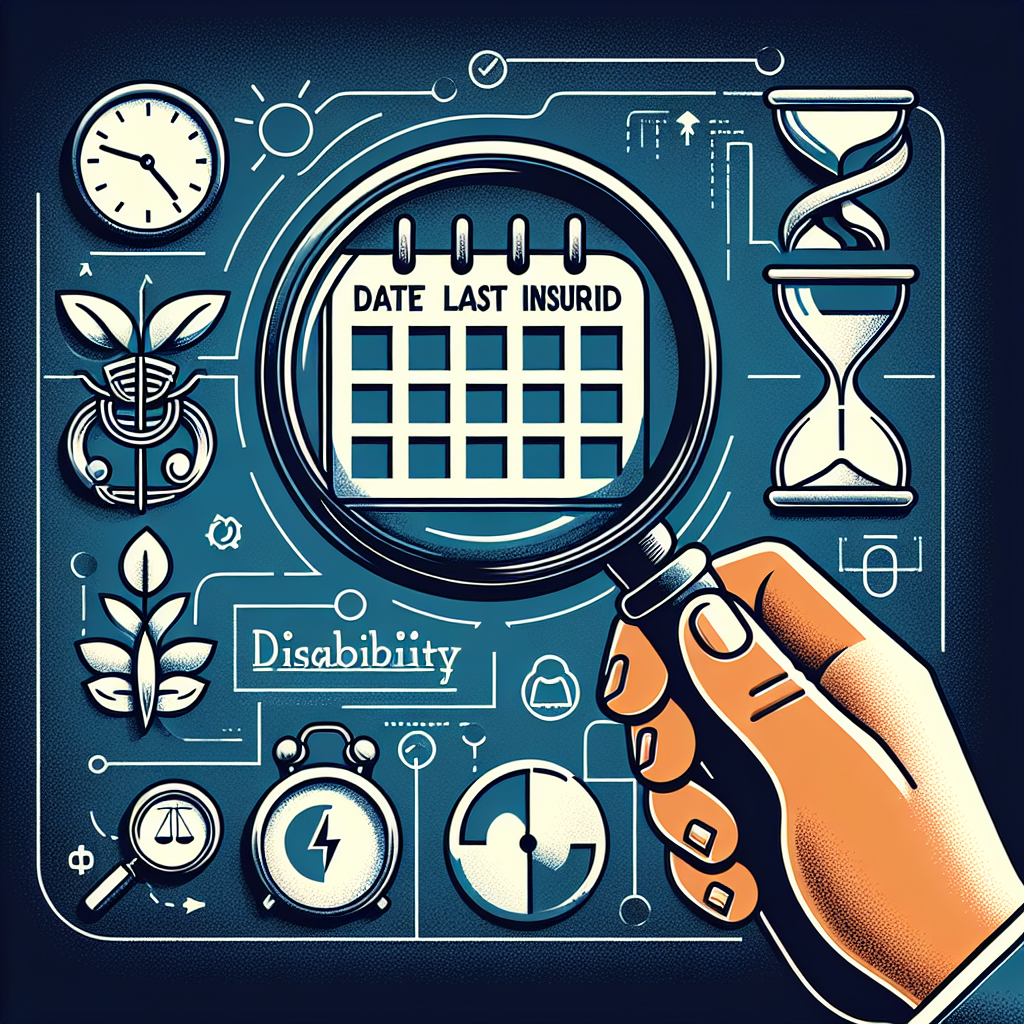Filed under Disability Insurance on
Understanding Date Last Insured for Disability Benefits

When navigating the intricate world of Social Security Disability Insurance (SSDI), understanding the nuances that impact your eligibility is crucial. One of these pivotal factors is the "Date Last Insured" or DLI. This concept can seem daunting at first, but grasping its significance is essential for anyone considering applying for disability benefits.
What is the Date Last Insured (DLI)?
The Date Last Insured is a term used by the Social Security Administration (SSA) to determine an individual's eligibility for SSDI benefits. It's a critical milestone in the benefit qualification process, marking the cutoff date by which you must prove your disabling condition began to be eligible for benefits.
In essence, the DLI is the last date on which you are considered to have enough Social Security work credits to be insured for disability benefits. If you become disabled after your Date Last Insured, you may not qualify for SSDI, regardless of how serious your impairment is.
How Are Social Security Work Credits Calculated?
Work credits are a fundamental concept in understanding your Date Last Insured. These credits are based on your total yearly earnings and you can earn up to four credits each year. Typically, the amount of earnings it takes to earn a credit increases marginally each year. For instance, in 2023, you earn one Social Security work credit for every $1,640 of wages or self-employment income, and you need $6,560 to earn the maximum four credits for the year.
To qualify for SSDI, you generally need a certain number of work credits, which vary depending on your age at the time you become disabled. Younger individuals need fewer work credits compared to older workers.
Why is the Date Last Insured Important?
Your Date Last Insured is pivotal because it solidly determines your eligibility for benefits. If your disability started on or before this date, and you meet all other medical and non-medical requirements, you might qualify for SSDI. If it started after, you may not qualify based on SSDI but might still be eligible for Supplemental Security Income (SSI), which is based on financial need, not work history.
How to Determine Your Date Last Insured
Understanding your Date Last Insured requires a bit of research and calculation. You can typically find your DLI on your Social Security earnings statement, which is available through your "my Social Security" account. This platform will provide you with the necessary information about your work credits and your DLI.
- Log in to your "my Social Security" account.
- Navigate to the "Earnings Record" section.
- Review your total work credits and look for the Date Last Insured.
If you prefer not to use the online method, you can request a copy by visiting a local Social Security office or by calling the SSA directly.
What Happens If You Miss Your Date Last Insured?
Missing your Date Last Insured can be a concerning situation. It generally means that you would not be eligible for SSDI benefits based on your work history if your disability onset date is later than your DLI. However, understanding alternative options can provide a pathway to receiving benefits regardless.
Exploring Supplemental Security Income (SSI)
If you've missed your Date Last Insured, SSI may be a viable alternative. Unlike SSDI, SSI is need-based and does not require work credits. It still involves meeting strict disability criteria, but it focuses on financial need. Essentially, the federal government provides SSI to those who are elderly, blind, or disabled and have limited income and resources.
- Understand the financial limits: SSI has strict financial eligibility requirements.
- Demonstrate disability: You must prove your disabling condition meets SSA's medical criteria.
- Utilize your resources: Consider any available resources and how they affect eligibility.
The Application Process and the Role of DLI
The SSDI application process can be lengthy and complex, especially in relation to your Date Last Insured. Knowing the significance of DLI helps streamline your preparation and application strategy.
Steps for a Successful SSDI Application
- Verify your work credits: Ensure you have sufficient work credits up to your Date Last Insured.
- Gather medical evidence: Compile all medical records that illustrate your condition and its impact on your ability to work.
- Consult with experts: Involve a disability attorney or advocate to enhance your application process.
- Apply promptly: Timing is vital to ensure you file for benefits before or shortly after your Date Last Insured.
- Prepare for appeals: Understand that initial decisions may lead to an appeal, and preparation is crucial.
The Date Last Insured plays a crucial role, especially if your claim requires proof of disability onset before your DLI. This solidifies the importance of accurate record-keeping and early action when considering SSDI an option.
Recent Trends and Expert Advice on DLI
Navigating the ins and outs of SSDI and DLI requires a nuanced understanding of government regulations and current trends. Recently, there's been an uptick in the number of disability claims and appeals, underscoring the importance of careful application and professional guidance.
Insights from Industry Professionals
Many disability experts highlight the necessity of understanding your work credits and their impact on your Date Last Insured. Ensuring you meet the criteria before your DLI passes can significantly influence a successful outcome. Regular check-ins with financial and legal advisors might also be recommended, providing clarity and preparing for future claims or adjustments.
Staying Informed with Regulatory Changes
The landscape of Social Security benefits, including SSDI and factors like the Date Last Insured, can change with new legislation and policy modifications. Keeping informed about these changes can help safeguard your benefits and ensure compliance with new rules.
In conclusion, your understanding of the Date Last Insured directly influences your eligibility for disability benefits. Whether you're exploring Social Security Disability Insurance for the first time or reassessing your current status, grasping the concept of DLI is a foundational step. By maintaining clear records and seeking professional advice, you can better navigate the complexities of SSDI and secure the benefits you deserve.



